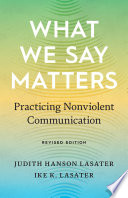

Language is not just a tool for communication; it shapes our reality. The book emphasizes how the words we choose can influence our thoughts, emotions, and actions. By understanding the impact of language, we can become more intentional in our communication, fostering positive relationships and environments. The authors argue that language can create or dismantle barriers, allowing us to either connect deeply with others or alienate them. This idea encourages readers to reflect on their language choices in personal and professional contexts, ultimately leading to more meaningful interactions.
Continue readingMindful communication involves being present and aware during conversations. The book advocates for active listening and thoughtful responses, which can transform interactions. By practicing mindfulness, individuals can reduce misunderstandings and conflicts. The authors provide techniques for cultivating mindfulness in communication, such as pausing before responding and being fully engaged in discussions. This idea highlights the importance of emotional intelligence in communication and encourages readers to develop these skills to enhance their personal and professional relationships.
Continue readingStorytelling is a powerful way to convey messages and connect with others. The book discusses how stories can evoke emotions, inspire action, and create shared experiences. By sharing personal narratives, individuals can foster empathy and understanding. The authors explore the structure of effective storytelling and how it can be used in various contexts, including leadership and marketing. This idea emphasizes the importance of authenticity in storytelling, encouraging readers to share their own stories to create connections and drive engagement.
Continue readingNonverbal communication, including body language, facial expressions, and tone of voice, plays a critical role in how messages are received. The book highlights the significance of aligning verbal and nonverbal cues to enhance clarity and trust. The authors provide insights into how nonverbal signals can reinforce or contradict spoken words, affecting the overall message. This idea encourages readers to be aware of their own nonverbal communication and to interpret others' cues accurately, leading to more effective interactions.
Continue readingFeedback is essential for growth and improvement, both personally and professionally. The book discusses how to give and receive feedback effectively, framing it as a dialogue rather than a one-sided critique. The authors emphasize the need for constructive feedback that focuses on behavior rather than personal attributes. This idea underscores the importance of creating a feedback-rich culture in organizations, where individuals feel safe to express their thoughts and learn from one another. It encourages readers to embrace feedback as a tool for continuous improvement.
Continue readingA culture of communication fosters openness, trust, and collaboration within teams and organizations. The book outlines strategies for building such a culture, including encouraging transparency and valuing diverse perspectives. The authors stress the importance of leadership in modeling effective communication behaviors. This idea highlights the role of communication in driving organizational success and employee engagement, encouraging readers to take an active role in cultivating a positive communication environment.
Continue readingAs technology evolves, so does the landscape of communication. The book explores emerging trends, such as digital communication and remote collaboration, and their implications for interpersonal interactions. The authors discuss the challenges and opportunities presented by technology, emphasizing the need for adaptability and continuous learning. This idea encourages readers to embrace new communication tools while remaining mindful of the human elements that underpin effective interactions.
Continue reading